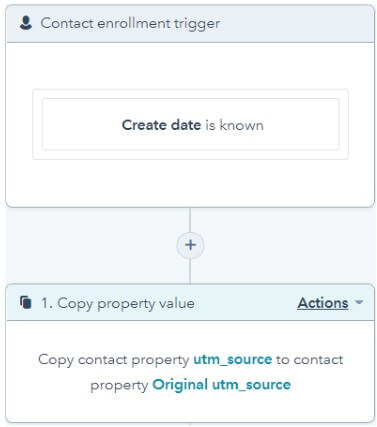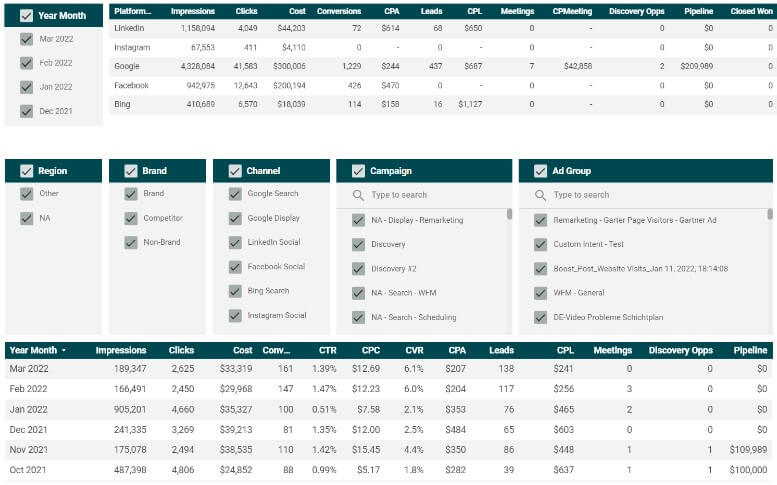Obility’s Data Integration Approach
A strong data foundation is critical to measuring marketing efforts, formulating appropriate goals, and generating insightful recommendations. Given the myriad of different platforms, attribution models, and tracking hurdles that our clients face, Obility created a Data Team to consult on how to get your data working to a point that it can be leveraged for reporting and optimization.
This data integration case study follows Client A, a PPC and SEO client who leverages HubSpot as their marketing automation and CRM platform.
The Challenges
HubSpot Tracking
HubSpot does not have out-of-the-box tracking integrations for all pay-per-click channels (e.g. Microsoft ads). While Client A had some understanding of lead quality from Google Ads, they did not have that same visibility into the lead quality of Microsoft Ads. HubSpot does a good job collecting a lot of the data points needed for attribution, but their attribution reporting is limited and they haven’t made it easy to access all of these data points.
Values Overwriting
We often see instances of the same user submitting more than one site form along the course of their journey. This can be challenging for many of our clients because information collected, like UTM values, from subsequent form submissions can overwrite the UTM values already captured on the contact object. Because Client A has more goals tied to generating new business rather than nurturing touchpoints, it is more impactful to optimize toward the channel that originally drove the lead. Therefore, preserving the original submission (UTM) values is critical to establishing a Lead Creation attribution model.
Value Collection
A common issue with tracking URL parameter values using hidden form fields is that marketing automation platforms, like HubSpot, do not provide a simple solution for storing parameters throughout a session. This can lead to misattribution if a person converts on a form other than the landing page, and no longer has parameters present in the URL. Additionally, hidden UTM fields do not track source and medium for channels like organic search, direct, and referral. HubSpot attributes the lead creation to the first click, but Client A wanted to attribute to the last click that led to the first form submission.
The Solutions
Capture Values
We aligned with Client A to use hidden form fields to capture information like source, medium, campaign, content, term, and more. Obility created these fields within HubSpot, and helped add them as hidden fields across relevant site forms. Configuring the platform to give us the data points we need, where we can access them, gives us the means to correctly attribute the data to our ad campaigns or analytics data and optimize against it.

Preserve Values
For each of the fields we created, Obility also created a “sister” field in HubSpot which is dedicated for preserving the original values. For example, after creating the UTM Source field, we also created a “sister” field called Original UTM Source. While the UTM Source field was added to site forms as hidden to collect information, we had our “sister”, placeholder field at-the-ready. We then set up a workflow so that when a new lead is created, each UTM value collected can be copied into its corresponding “sister” field for preservation. Now, if the same user were to submit a second site form, UTM Source could overwrite with the new value while Original UTM Source would remain unchanged, preserving the value captured at the time of lead creation.
Persist Values for Capture
Making sure the hidden form field values represent the correct channel ensures accurate attribution. Obility’s Data Team developed a custom solution for persistent URL parameter tracking. After discussing the solution with Client A, we deployed it in Google Tag Manager. The parameter values are now stored in a cookie, and follow the user across the pages. There is a script that will inject the values into any form the user eventually fills out (so long as the cookie does not expire). We designed our script to also pass UTM values for other channels, like organic, referral, and direct so that Client A can easily report on all channels with the same fields. Note: if the cookied user returns to the site via a different channel, the solution uses last click attribution (unless the last click was direct, then it attributes to the previous non-direct click), similar to how Google Analytics attributes. Now, we had a method to attribute the lead creation to the last click that led to the first form submission.
The Results
Through the use of URL parameters and hidden form fields, corresponding “sister” fields to preserve original values, and persistent URL parameter tracking with complete channel attribution, Client A achieved a fully-developed Lead Creation attribution model. Obility’s Data Team worked with Client A to configure the HubSpot Reports to refresh directly into Client A’s Database. HubSpot data now seamlessly integrates with data from all ad platforms, as well as Google Analytics.
After the integration process was completed, Obility built Client A an automated dashboard that refreshes daily. Now, both Client A and Obility teams can analyze PPC and organic search metrics spanning the full funnel of the user journey–from impressions, spend, and sessions tracking in the ads and analytics platforms, to opportunities (deals), pipeline, and customers tracked in HubSpot.
This multi-step approach accurately captures information relevant to a lead’s creation. With this information, the Obility team worked with Client A to pinpoint the most effective campaigns, ad groups, and landing pages based on lead stages provided by HubSpot. Metrics like cost-per-Opportunity allow for more insightful recommendations and optimizations of PPC budgets and targeting toward more qualified leads. In addition to PPC, Obility is also able to leverage the integrated Google Analytics data to better inform our search engine optimization efforts and prioritization of SEO projects to drive quality results.

About Obility
We have one purpose: help B2B companies generate demand and increase revenue through online marketing. Located in Portland, Oregon and founded in early 2011, we’re a fast-growing agency with a global client base ranging from early stage start-ups to multinational enterprises. Our focus is on B2B companies and we’re proud that our growth has been due primarily to client referrals.
